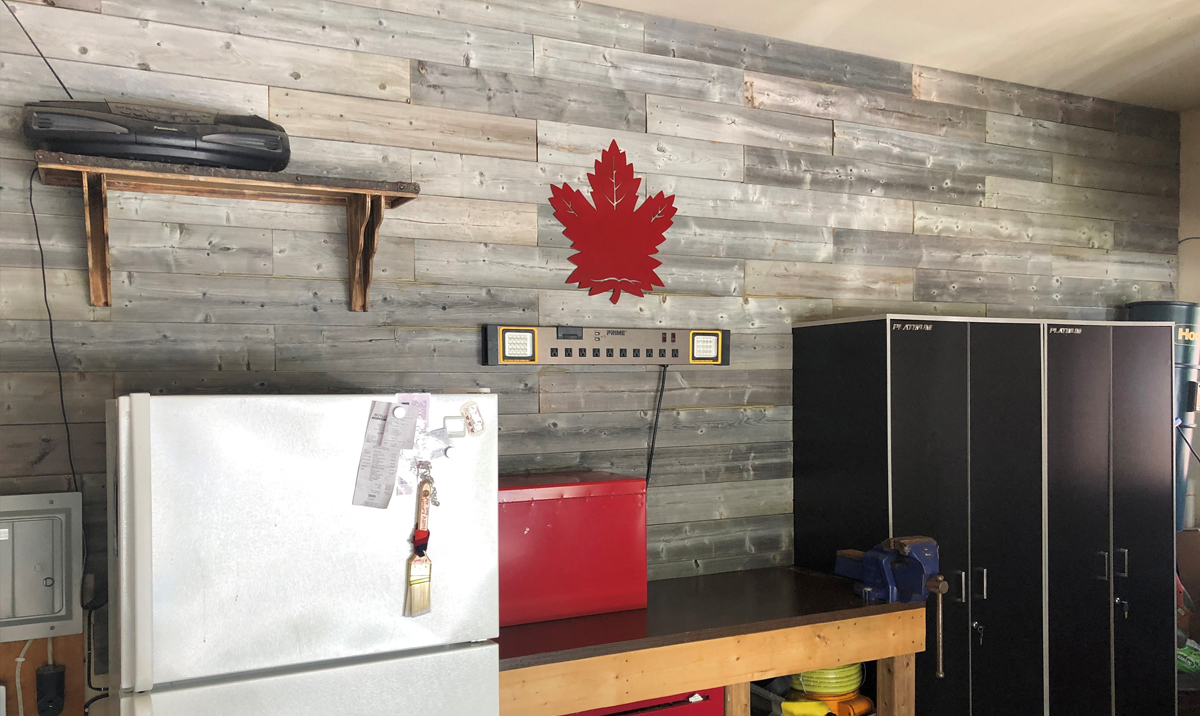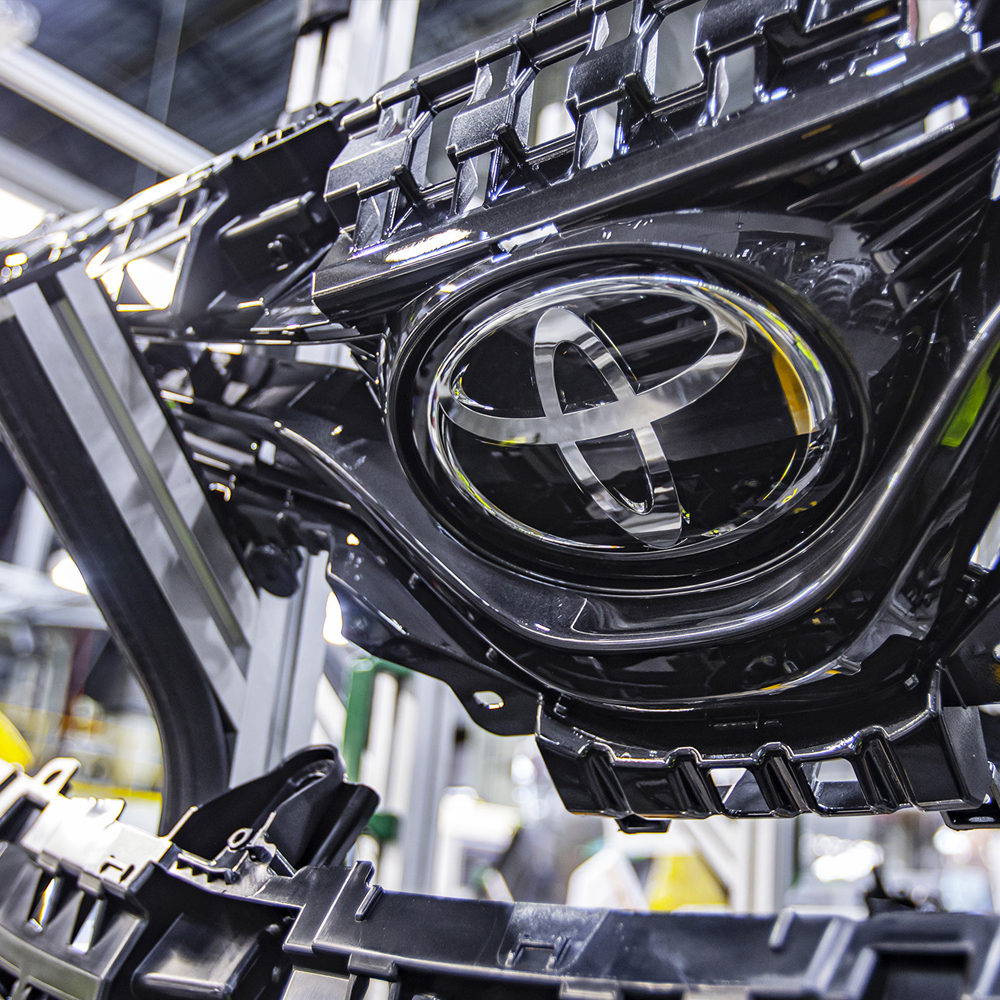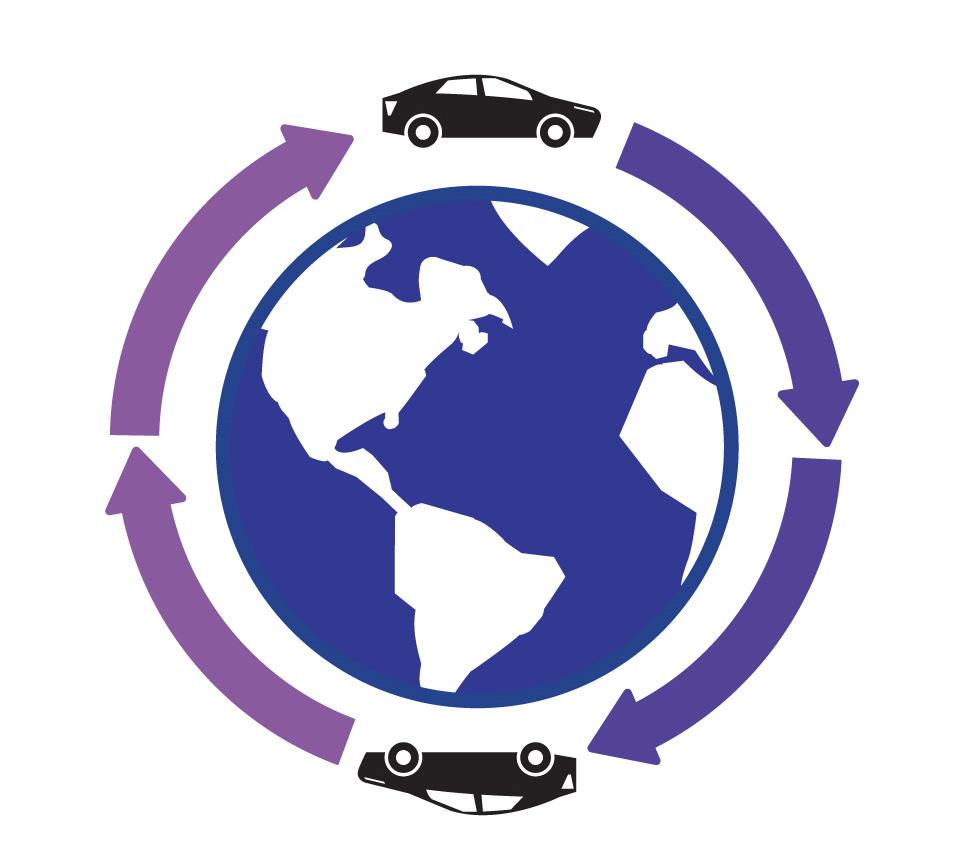When shipping vehicle parts, automotive companies and their suppliers use a variety of packaging types to prevent damage and maximize warehouse space.
One way Toyota has reduced packaging is through the use of returnable shipping containers. Across North America, Toyota uses returnable packaging modules and racks for shipping parts between suppliers, distribution centers, plants and dealerships. These returnable containers take the place of thousands of wooden pallets and corrugated cardboard boxes.
About 60,000 reusable containers travel through the service parts and accessories network and between 2017 and 20192, these containers made more than 5 million inbound and outbound trips to and from our two part centers. Between 2017 and 2019, Toyota’s returnable shipping containers replaced the use of 54.1 million pounds of cardboard boxes and 144.3 million pounds of wooden crates, and avoided $229.1 million in cost.
Thanks to the Environmental Paper Network Calculator3, we are able to estimate avoided environmental impacts, which take into account all stages in the paper life cycle, such as pulpwood harvesting and pulp and paper manufacturing. Not using this cardboard avoids:
- Using wood from 327,000 trees.
- Generating 10.5 million pounds of solid waste, equivalent to the amount of waste generated by 2.4 million people in a day.
- Consuming 398 million gallons of water, equivalent to 287,000 clothes washers operated per year.
- Emitting 3,050 pounds of volatile organic compounds (VOCs), equivalent to the emissions from driving 12.8 million miles per year.
2While TMNA's action plan is based on fiscal years, we track waste and packaging metrics on a calendar year basis. This target is measured against progress made each calendar year.
3Environmental impact estimates were made using the Environmental Paper Network Paper Calculator Version 4.0. For more information, visit environmentalpaper.org. Estimates for cardboard savings assume an average 50 percent recycled content.
CONSERVING NATURAL RESOURCES
We strive to conserve natural resources by increasing our use of sustainable materials and extending the life of vehicle parts such as batteries.
SUSTAINABLE MATERIALS
Using sustainable materials means using materials in the most productive way with emphasis on using less and reducing toxic chemicals and environmental impacts across the whole life cycle. Over the course of a vehicle's life cycle, sustainable materials – especially those that are renewable, recyclable or are made of recycled content – have a smaller greenhouse gas footprint and generate less waste than their alternatives. We continue to develop and commercialize technologies that enable the use of sustainable materials in a range of components and applications. For example:
- Bio-based plastics — plastics derived either wholly or in part from plant materials — are used in the seat cushions in Toyota Prius, Corolla and RAV4, and in Lexus RX 350.
- Post-industrial garment clippings made of cotton and synthetic fibers are used in door panel insulation, floor silencer and floor mats.
We also apply the principles of sustainable materials to manufacturing. At Toyota Motor Manufacturing Canada (TMMC) in Cambridge, Ontario, team members manufacture front and rear bumpers. The raw material used to mold the bumpers is a plastic resin known as TSOP-7. This resin can be melted and returned to its original form without any degradation in quality. Team members have developed a process to ensure 100 percent of the scrap bumper material that leaves TMMC, comes back to TMMC. This process, which is regenerative by design, demonstrates a circular economy, where production is decoupled from the consumption of increasing amounts of virgin material.
With the help of the University of Waterloo, team members at the plant were able to develop a way to recycle the scrap bumper material in regrind form. By studying the mechanical properties of both virgin resins and regrind resins, team members discovered the optimal virgin/regrind resin ratio for use in bumper molds is 80/20. But the regrind resin at the plant had different sizes and shapes, and the surface area was very irregular, making it difficult to recycle. The plant’s waste vendor, Green Metals Canada, helped develop a uniform particle size by converting the bumper regrind into uniform pellets. Together with the right virgin pellet/regrind pellet ratio, 100 percent of scrap bumper material (in regrind form) is now recyclable.
Green Metals Canada collects the bumper scrap, mechanically converts it to a regrind material, then forms it into uniform pellets and returns it to the plant, where it’s used on new vehicle bumpers as well as on service parts, such as replacement bumpers sold at dealerships. The goal at TMMC is to use between 8 and 20 percent of recycled regrind on new vehicles. Once we reach this goal, waste will be reduced by up to 1 kilogram per vehicle – or 142,000 pounds per year. Additionally, using recycled regrind eliminates several TSOP-7 deliveries, which avoids 51 metric tons of CO2 emissions per year. TMMC plans to implement this practice at its sister plant in Woodstock in the near future.
RARE EARTH METALS
In addition to sustainable materials, we also look for alternatives to rare earth metals, which are necessary components in hundreds of products across a wide range of applications, especially high-tech consumer products like electric vehicles. The mining of rare earth metals can have negative environmental and social consequences. Our parent company, Toyota Motor Corporation, has developed a magnet used in electric vehicle motors that replaces up to 50 percent of the neodymium, a rare earth metal, with more abundant and cheaper lanthanum and cerium. Toyota expects the magnets to be used in electric vehicles and other applications in the first half of the 2020s.
HYBRID BATTERY RECYCLING
Since 2000, the Toyota and Lexus brands have sold more than 3.9 million hybrid electric vehicles in the U.S. Until 2012, all of these hybrid vehicles used nickel-metal-hydride (NiMH) batteries. Beginning in 2012, Toyota began using lithium-ion (Li-ion) batteries in certain hybrid and plug-in hybrid vehicles. Both types of batteries are extremely robust – they are covered by an 8-year/100,000 mile warranty4.
In 2010, Toyota established a comprehensive NiMH battery recycling program with Toyota and Lexus dealerships in the U.S. and Puerto Rico. Our goal was to keep these batteries out of landfills and recycle the components. We designed custom reusable containers to secure and protect the batteries from damage and leakage during shipping. We cover the cost to ship used batteries from dealerships to our recycling partner, Kinsbursky Brothers INTL (KBI), in Southern California.
In 2019, TMNA expanded the recycling program to include Li-ion batteries. We worked with a certified materials handler to assure the batteries are properly inspected and packaged for shipping, and designed custom shipping containers to meet or exceed U.S. Department of Transportation requirements.
KBI recycles 100 percent of the NiMH and Li-ion batteries they receive, including the battery cells, the casing, the wiring and plastic components. Since 2010, we have recovered and recycled over 140,000 hybrid vehicle batteries, totaling over 9.2 million pounds.
We continue to enhance our battery collection process to promote proper end-of-life management. We seek to go beyond recycling and aim to repair, remanufacture or repurpose battery cells to maximize the useful life of the batteries before finally recycling the components:
- Repair: Battery packs that meet certain criteria can be repaired by replacing individual cells as needed. This can be done at a dealership and eliminates the need to transport heavy batteries.
- Remanufacture: Battery packs that can’t be repaired must be shipped to a third-party facility, where they are fully disassembled to test and grade the individual cells. A group of cells with like characteristics are then reassembled into a remanufactured battery to be put into vehicle service again.
- Repurpose: Hybrid vehicles require a high level of battery performance. Cells that do not meet the strict Toyota requirements for vehicle use may still have useful life in non-automotive applications, such as stationary batteries or material-handling equipment.
Our parent company, Toyota Motor Corporation (TMC), has developed advanced recycling methods to recover key materials from NiMH batteries and reuse them as raw material for new battery production. TMC is working with the recycling industry and researchers to develop similar techniques for Li-ion batteries. We are exploring how we can bring these methods to North America to facilitate battery-to-battery recycling.
4Beginning with 2020 model year vehicles, this warranty is extended to 10 years/150,000 miles.
ELIMINATING WASTE
Waste (both hazardous and non-hazardous) generated by our North American facilities totaled 745.8 million pounds in calendar year 2019. We recycled, reused or composted 92.4 percent of all waste in 2019. Only 1.9 percent was sent to landfills for disposal (for certain waste streams, landfill disposal is required by law), and 5.7 percent was incinerated or used for fuels blending or waste-to-energy.
See "Waste" in Performance for more detailed waste data.
Examples of projects that reduce waste and maximize recycling include the following:
- Reducing Paint Shop Waste: At the assembly plant in Woodstock, Ontario (Canada), small improvements in the paint shop have led to a big reduction in waste. Previously, waste generated from painting operations was collected in a large tank, weighed and disposed offsite. This included deionized water used to clean the painting robots, which was disposed after only one purge of the color changer valves. Now, this water is treated and recirculated back into the paint booth water system. Combined with reducing the pressure in primer robots, which further reduces the amount of waste generated from purging, the plant is reducing annual waste generation by an estimated 672,400 pounds (305,000 kilograms).
- Reducing Paper Consumption: At the assembly plant in Mississippi, team members are using an electronic hand-held device to inspect vehicles for defects. This replaces paper spec sheets and eliminates 22,740 pounds of paper waste per year. This is the equivalent of saving 273 trees from being cut down.
- Separating Waste for Compost: At our R&D centers in Ann Arbor and York Township, Michigan, team members began separating compostable waste at the end of 2019. Food waste, non-bleached paper towels and napkins, and BPI-certified to-go containers and utensils are collected from cafeterias and office areas and sent to Hammond Farms, where the material is composted, then blended and sold as landscaping material. In the first seven months of the program, 12,134 pounds of waste were sent for composting instead of disposal.
- Updating Recycling Signage: We continue to emphasize recycling in office settings. For example, we have updated the recycling signage at our corporate headquarters in Plano, Texas, the R&D center in Ann Arbor, Michigan, and in the office areas at our plants in Princeton, Indiana, and Georgetown, Kentucky. The new signage makes it easier for team members to know what can be recycled and which bin to use.

Toyota encourages team members to practice recycling not just at work, but at home, too. Team member Wayne Keeso, from Toyota’s Cambridge, Ontario, assembly plant, responded to an Earth Day challenge to find a material at home that would have been thrown away, and make something new out of it. He chose to build a wall made from a wooden fence.
SUPPORTING COMMUNITY RECYCLING
One of the best ways for us to help create a net positive impact on the environment is to share our expertise with others. That’s why team members participate in community events that help spread the word about the environmental and cost benefits of reducing, reusing and recycling.
Since 1994, Toyota has helped team members and communities recycle and properly dispose of household waste. During designated collection days, team members and residents from surrounding communities are invited to drop off electronic waste, appliances, paint and other household items that are difficult to recycle or dispose. Team members also collect items such as clothing and eyeglasses that can be donated to those in need.
Several sites in the U.S. and Canada have been hosting these events for years and together, they have ensured more than 2.2 million pounds of material have been recycled or properly disposed. Events that were scheduled for April 2020 to commemorate Earth Day were either cancelled or postponed due to the COVID-19 pandemic and state-mandated stay-at-home orders. We plan to resume these activities once they can be completed in a safe manner for all involved.

